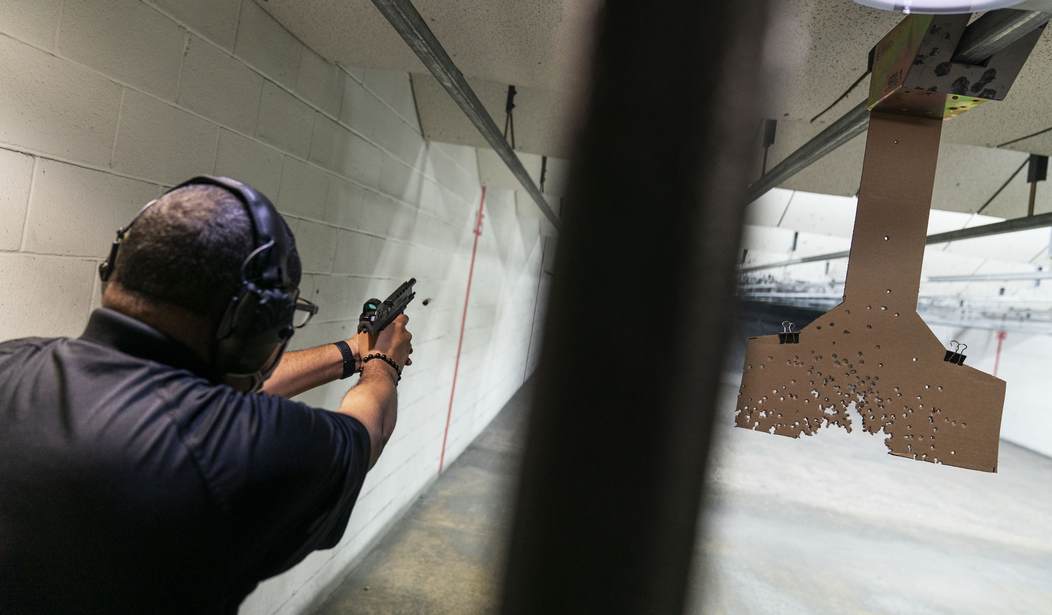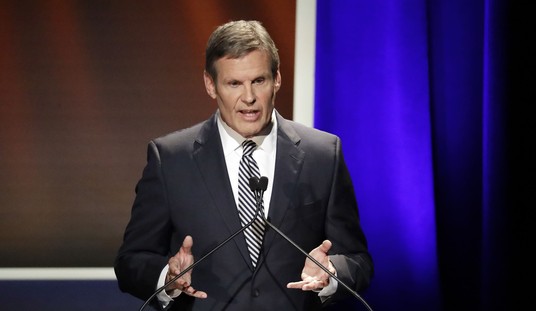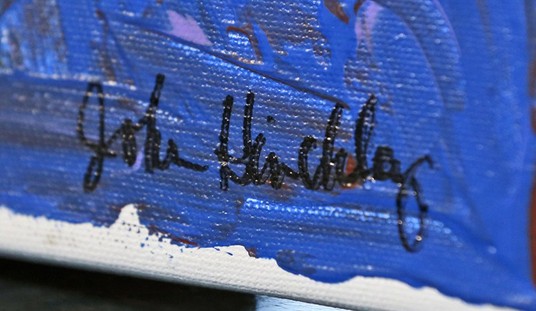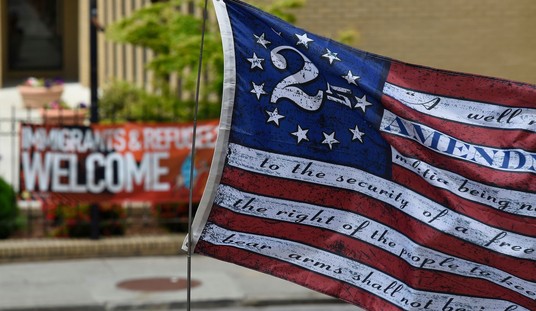One of the dumbest arguments that gun control activists make is to claim that gun owners care more about their firearms than murdered children. If only they weren’t so cold and callous, then surely they’d support “common sense” proposals like making it a felony offense to own the most commonly-sold rifle in the country or criminalizing the possession of any of the more than 100-million “large capacity” magazines in the hands of legal gun owners. I’ve even seen that shameless accusation hurled at those who’ve lost loved ones to mass murderers; an appalling attempt to dehumanize and demonize all those who oppose their anti-gun agenda.
Georgetown law professor Sheryll Cashin has made her own attempt to dehumanize gun owners, though she’s used the talking point mentioned above as a jumping-off point for a more historic-based approach to her emotional appeal to discard the individual right to armed self-defense. At POLITICO, Cashin argues that the modern gun control movement is akin to the abolitionist movement of the 19th century; casting gun owners in the role of immoral slaveowners willing to ignore all kinds of human suffering in order to maintain their right to own property; human beings in the case of the slaveowners, and firearms in the case of those who support the right to keep and bear arms.
The parallels, though rough, are telling. In the 1850s, opposition to slavery accelerated in the North, but the original structural accommodations to slavery produced a stalemate and politicians were not able to curtail it. Then as now, there was a growing disconnect between the polity and politics. We should think long and hard about where that could lead.
Many Americans assume that the antebellum debate over slavery was a moral one. But in her expansive history of abolition, scholar Manisha Sinha shows that abolitionists’ moral arguments were never enough to end slavery. Instead, in the 1850s much abolitionist argument turned from the realm of religion, or moral and political philosophy, to constitutional interpretation.
But constitutional argument, too, was unable to advance abolition because the Supreme Court upheld the Founders’ original compromise to slavery. For example, the Court enforced the constitution’s fugitive slave clause against northern states that tried to protect free and escaped Blacks from enslavers. And in the Dred Scott case, the Court excluded Black people from U.S. citizenship and tried to settle the question of slavery for all time, denying Congress the power to stop its expansion to western and northern territories — an accelerant to civil war.
Similarly, in the debate over gun regulation, moral arguments, appeals to the sanctity of life, especially of children, have not resulted in solutions that actually stop mass killings. And the Supreme Court, as in Dred Scott, has imposed its will, contributing to Second Amendment absolutism. In 2008 it bypassed the words “well-regulated militia” to strike down a strict local gun law and enshrine for the first time an individual right to bear arms for self-defense in the home. Then last June, emboldened conservative justices expanded rights for gun owners; in New York State Rifle and Pistol Association v. Bruen, the Court established a constitutional right to carry firearms in public. And it denied the State of New York the ability to insist that applicants for a license to carry a concealed weapon show a special need for self-protection in public spaces.
The Court issued this imperious decision at the same time Congress was enacting its new bipartisan gun reforms. State political actors that try to promote gun safety are now bearing its brunt. The case has unleashed scores of lawsuits by gun enthusiasts against state and local gun restrictions. Lower courts have invoked Bruen to halt laws that had been viewed as constitutional, including a local assault weapons ban, a restriction on homemade firearms and Texas’ ban on 18-20 year-olds carrying handguns publicly.
Abolitionists, too, were boxed in. In the 1850s, as moral and constitutional arguments failed, they moved to politics. Disparate northern bedfellows who opposed slavery ranged from racist “free soil” advocates who wanted to keep Blacks out of their states and not compete with free labor, to Radical Republican abolitionists who supported Black equality. The political argument that gained traction among northerners was the unifying idea of “Slave Power” or “slavocracy,” in which the country was governed by a small class of southern planter-elites.
But antebellum politics was gridlocked by systems and narratives that had perennially accommodated slavery. In particular, the Constitution’s “3/5ths clause” and the allocation of two senators to all states gave disproportionate power to small-population southern states. Incapable of ending an admitted evil, all effort at containing or reforming it stymied by political polarization, this led to more compromises that extended its life.
This cycle ended only with a war that killed more than 600,000 people.
Let’s start with the obvious problem with Cashin’s argument; it was the slaveowners who were all in favor of gun control, whereas the Radical Republican abolitionists (at the very least) were all in favor of the millions of slaves being held in bondage having access to every one of their rights, including the right to keep and bear arms. Cashin references the Dred Scott decision, but neglects to mention that Justice Roger Taney’s opposition to the idea of black Americans as full citizens stemmed in part from his objection to those Americans exercising their Second Amendment rights. John Brown’s raid on the federal armory at Harper’s Ferry, which was meant to arm Virginia slaves and lead to a revolt over their masters, is also a direct repudiation of her theses that the modern equivalent of the abolition movement would be today’s anti-gun activists.
Even after the Civil War the push from Republicans was to ensure that newly-freed slaves had access to firearms, while many former slaveowners tried as hard as they could to keep their former slaves disarmed.
Almost as soon as the shooting war stopped, Southern governments attempted to establish de facto slavery through a variety of state and local laws. Racially targeted gun prohibition was a common theme of these Black Codes. The freedmen’s concern was having arms for private self-defense and decidedly not about propping up the militias of the states recently in rebellion. Indeed, those state militias were often the enforcers of the Black Codes, so they were among the hazards Blacks needed to arm against. Even before the war’s end, the dynamic was plain. Witness President Lincoln’s instruction in the Emancipation Proclamation: “I hereby enjoin upon the people so declared to be free to abstain from all violence, unless in necessary self-defense.”
In 1866, the Second Freedman’s Bureau Act explicitly guaranteed to freed slaves “the constitutional right to bear arms” as a block against the racist gun prohibitions in the Black Codes. The Freedman’s Bureau Act also charged the occupying army with protecting the freedmen’s individual rights, including the right to arms.
Union Army officers and Freedmen’s Bureau agents worked to protect Blacks’ right to arms for self-defense and testified before Congress about the importance of vindicating this right. Black newspapers widely distributed the orders of the occupying army guaranteeing Blacks the constitutional right to arms for self-defense. Newly formed Black political organizations and state conventions filed numerous petitions with Congress pleading for protection of their right to arms for individual self-defense. In a May 1865 speech in New York, the great Black abolitionist Frederick Douglass lamented that “the Legislatures of the South can take from [the freedmen] the right to keep and bear arms” and that the work of the abolitionists was not finished until that right was enforceable against state governments.
Far from the radical abolitionists who recognized the importance of both individual and collective self defense, the modern gun control movement has far more in common with the antebellum slave societies that implemented racist gun control laws, the Jim Crow-era Democrats who imposed even more restrictions (some of them racially-neutral on their face but racist in their intent and enforcement), and those southern Democratic politicians who responded to the Supreme Court decision in Brown v. Board of Education declaring segregated schools violated the Fourteenth Amendment by shutting down the public schools rather than abide by the Court’s decision.
The gun control lobby and their allies in states like New York and California have launched their own version of Massive Resistance to the Supreme Court’s decision in Bruen, throwing up as many barriers as possible (including innumerable “gun-free zones”) in front of those hoping to exercise their own right to armed self-defense and in some cases even publicly arguing that residents of black-majority cities shouldn’t be able to get concealed carry licenses. It’s downright laughable to argue that today’s anti-gunners are the ideological descendants of those who fought to ensure that newly-freed slaves had both the right and the means to defend themselves and their families. The truth, whether Cashin likes it or not, is that the modern gun control movement and its fundamental premise of criminalizing a constitutional right places people in bondage rather than removing their chains.








